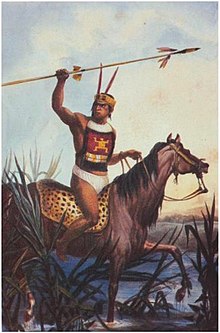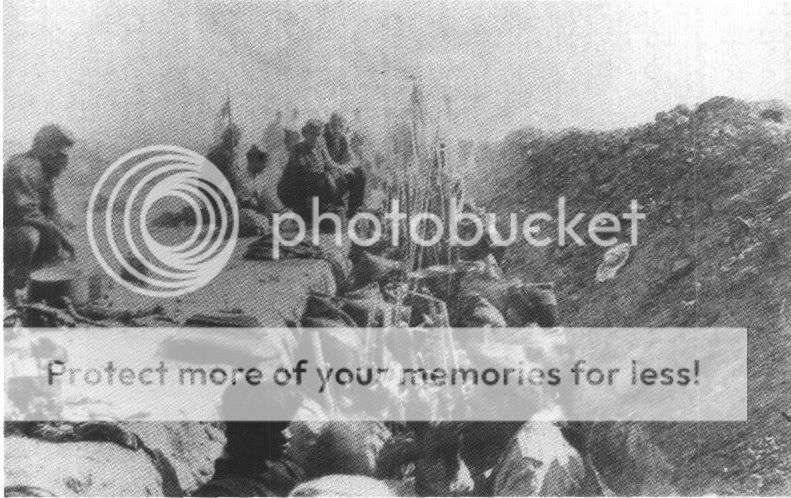Chapter 1, Part 1: Beginnings in Uruguay OR The Mato Grosso Campaign
The
Uruguayan War began with great, though not unexpected, success for the Brazilian-Colorado alliance. After their victory at the border, Venancio Flores' army fought a series of hugely one-sided engagements with Blanco forces across Uruguay, as the Uruguayans desperately attempted delaying actions to allow for the fortification of Montevideo. In the wake of the Brazilian advance, rural areas tore themselves apart in partisan warfare; pro-Blanco and pro-Colorado citizen soldiers armed themselves and began a vicious bloodletting rivaled in brutality only by the First Civil War some ten years prior. Many of these soldiers participated in acts of extreme genocide as well against the few remaining indigenous populations of Uruguay(1), leading to migrations by these latter into Argentina and then southwest, until reaching Patagonia, where they allied themselves with the Mapuche. This would have major effects on later Argentine attempts to expand into the area(2).
A Minuane(3) warrior in Patagonia
Meanwhile, in Montevideo, Berro's government scrambled to prepare a defense against the Brazilians. With many of the pro-Blanco
gauchos(4) that usually made up the party's militia already on the wrong side of the Brazilian advance, Berro had very few options. In early March, mandatory conscription was declared in Montevideo, with the police and presidential guard unceremoniously executing draft resisters. A little over half of the entire working population of the city was conscripted and armed with whatever was at hand, with a skeleton crew working the docks and vital services. Makeshift fortifications of sandbags and piled wood rose up rapidly around the city; it is easy to say in retrospect that the Blancos were doing all they could.
A Presidential Guard rallies citizen militia
It was in Paraguay, however, that the war would drastically change. After the Lopez government’s demands that Brazil withdraw from Uruguay were ignored, Paraguay declared war on Brazil on March 20. Around 4,500 troops(5) led by Colonel
Francisco Isidoro Resquin crossed the border into Mato Grosso, first engaging Brazilian troops at the
Battle of Novo Coimbra. Around two hundred Brazilians under the command of Lt. Col.
Hermenegildo de Albuquerque Porto Carrero were able to hold out against the Paraguayans for six days before their munitions were exhausted. Attempting to escape the fort in the gunboat
Anhambai, the Brazilians were caught and captured by Resquin’s own gunboats. After the conquest of Novo Coimbra, Resquin continued his offensive, capturing
Albuquerque,
Tage, and
Corumbá before the beginning of summer. It was at Miranda that the Paraguayans would encounter the stiffest resistance against their offensive. There, Col.
José Dias da Silva commanded more than a thousand troops drawn from military outposts all around the region(6) in an attempt to delay the Paraguayan advance on
Cuiabá, the regional capital, which itself featured further defenses. The
Siege of Miranda would last almost the entirety of summer, with the Brazilians bloodily resisting the many attempts of Resquin’s army to capture the fort. Finally, in early September, gunboats brought up from Paraguay itself were able to sail behind the fort and surround it entirely, leading to an unending cavalcade of artillery on the exposed Brazilians until their final surrender on September 17. More than five hundred Brazilians were taken prisoner; Resquin, a surprisingly gentlemanly commander, treated the captured troops with respect and fairness, which would lead to his excellent postwar reputation in Brazil. In November, the Paraguayan forces reached the outskirts of Cuiabá, and were sent off by Brazilian defenders in the
First Battle of Cuiabá, really more of a skirmish than a full battle. Rather than press the fight against the Brazilians, Resquin opted to withdraw from Cuiabá and instead consolidate occupied Mato Grosso; after all, he had already achieved his objective of denying Mato Grosso’s large diamond and gold mines to the enemy, and would almost certainly draw more Brazilian forces to his positions once they managed to cross the vast Amazon(7). With these in mind, Resquin was more than content to wait Cuiabá out.
Brazilian soldiers at Miranda prepare for another Paraguayan assault
(1)There were very, very few natives remaining in Uruguay after the massacre of the Charrua people. However, these groups (seven tribes, around 3,000-4,000 people) will be more than enough to make the difference in the south.
(2)Big butterflies for Argentina and Chile incoming...
(3)The Minuane were a large tribe native to Uruguay, northeastern Argentina, and southeastern Brazil. Though their numbers were much depleted by the 1860s, they would not become extinct until the early decades of the 20th century after determined attempts by successive Uruguayan governments to eradicate them.
(4) The gauchos are a huge part of 19th-century Uruguayan politics, simply because they were the only large population of armed, political men in the entire country. In most of the conflicts of the 19th century, they were the go-to militia for both parties.
(5) Yes, that's around a thousand more than IOTL, but in only one army rather than two.
(6) First big tactical butterfly. With a somewhat slower Paraguayan advance and without the governor being in Paraguayan custody as per OTL, the Brazilians are more able to coordinate a defense. They still lose, but they're able to slow down the Paraguayans and bleed them out quite a bit.
(7) Mato Grosso wasn't connected by road to the populated east, so to get to the frontline, Brazilian troops are either going to have to travel through the jungle or slowly along the many tributary rivers to Cuiaba. Either way, it's gonna suck for them
* * *
Next update will cover the Rio Grande del Sul campaign and the beginning of the Second Siege of Montevideo!



